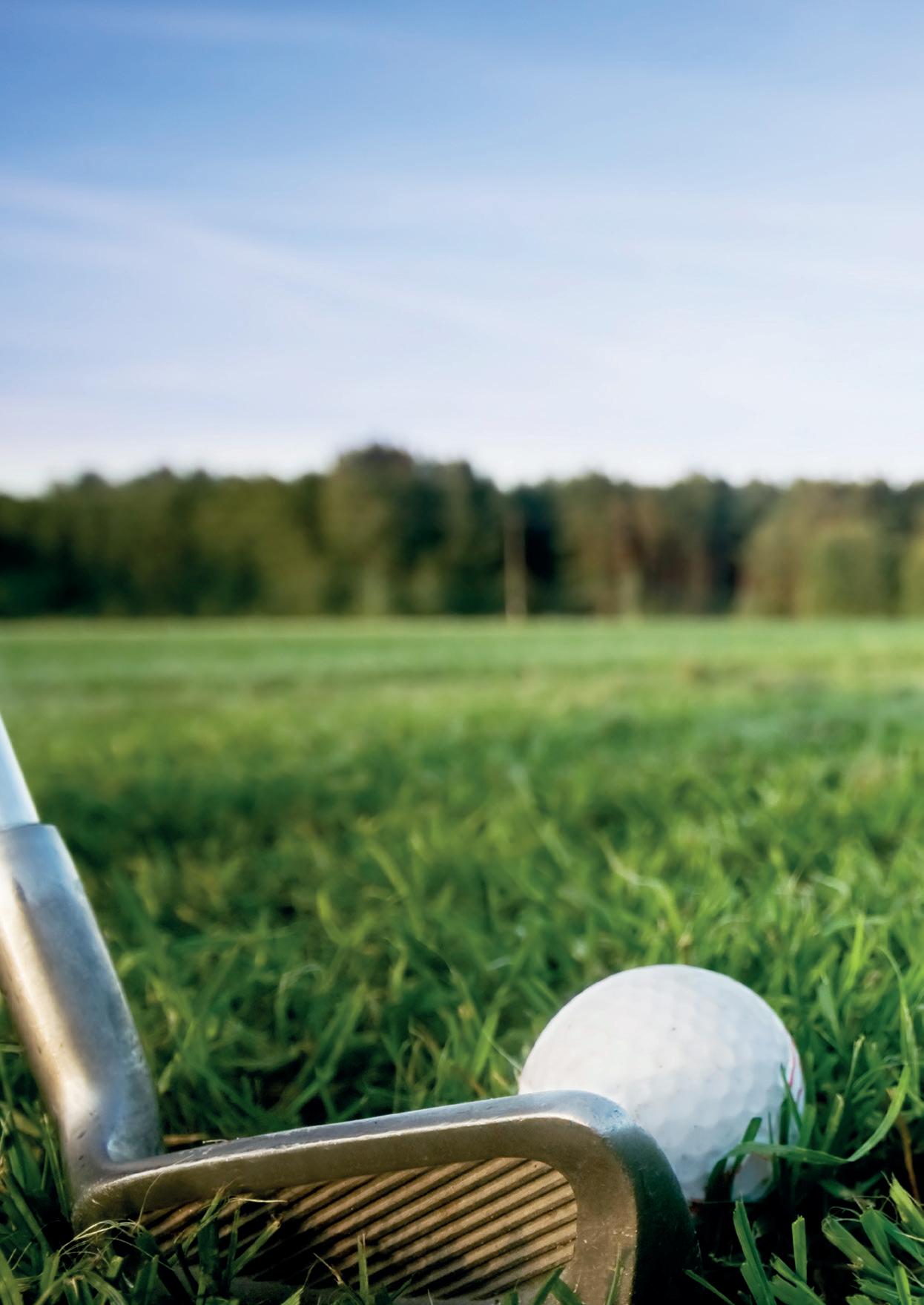
3 minute read
Avoid back and neck pain and injury in golf
Avoid back and neck pain and injury in golf
Golf is a favourite pastime for many across the nation. Whether you’re a seasoned player or new to the sport, it’s important to check your swing to avoid unnecessary injury, says the British Chiropractic Association.
Advertisement
ACHES and pains can make 18 holes seem like 108, and make every swing feel like an arduous and painful task. It can, of course, have a negative impact on the quality of your game and score.
Poor technique, inadequate warm up before playing and carrying heavy golf bags are the main causes of injury, particularly to a player’s back or wrist. But these simple tips can help keep your swing feeling great.
Pressure points
The lower back, neck and wrists are the most obvious joints at risk for golfers through the repetitive nature of the golf swing. But carrying a golf bag can also place a strain on your neck and put extra stress on your spine, leading to extra lactic acid build-up in your muscles and fatigue. When you’re fatigued, you’re more prone to injuries – not to mention a poorer performance! Take advantage of the latest golf accessories designed to help, such as lighter bags and dual harness straps over shoulders to distribute the weight. If you’re using a golf cart, push it in front of you rather than pulling it behind as there is less twist through your spine.
Warm up
Golfers often don’t warm up at all before playing. If muscles are not prepared by a good stretching routine, it can lead to a lack of flexibility and injury. The lower back is often the victim of reduced mobility in other areas
such as the mid-back and hips. If they cannot rotate enough during the golf swing, the lower back takes more of the stress. Spend two or three minutes warming up before teeing off to tease more movement out of all the structures needed in the swing, such as your hips, midback, hamstrings, quads, chest muscles and shoulders.
Posture
Adopting a ‘C’ or ‘S’ posture during the golf swing can reduce the quality and consistency of ball strike, distance, and can sometimes lead to back pain. Those in a ‘C’ posture have a hunched and rounded spine with tucked under hips, whereas those in a ‘S’ posture have a better hinge in their hips but an overarched lower back. The sweet spot is between those two postures. Ask a friend or your golf pro to take a photo or video of you as you swing to see which posture you are adopting.
Swing technique
Going way past parallel in your back swing can sometimes cause excessive extension (arching) in your lower back and lead to back pain. To avoid this, set up your golf stance and place one hand on the top of your belt (approximately the level of your pubic bone) and the other approximately 8-12 inches away under your bottom rib. Keeping your hands in place, move your body as if you were making slow, smooth swings. The distance between your hands should not change.
Getting around
Contrary to popular belief, trolleys are not the best way to caddy clubs as they can cause unnecessary pressure from pulling and bending in the wrong positions. A power or electric caddy is better. When it comes to picking up your golf bags and replacing the divots, bend from the knees and hips as well as the back. Finally, your shoes should not only provide a good foundation for your posture and swing, they should also allow you to walk comfortably for the 12,000 steps or so you walk in each round.
By following these few simple tips, players can expect to play a better game of golf with less effort and risk of injury, while at the same time having more fun and hopefully a few more birdies!

Image: Bedneyimages/Freepik

